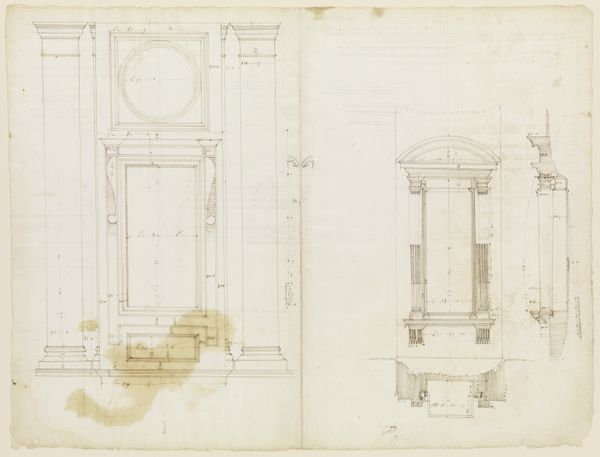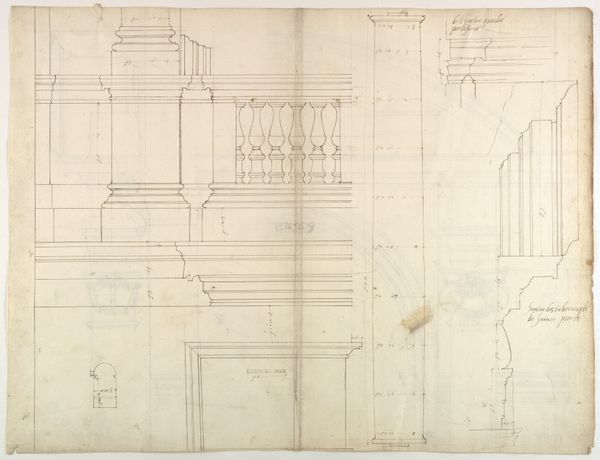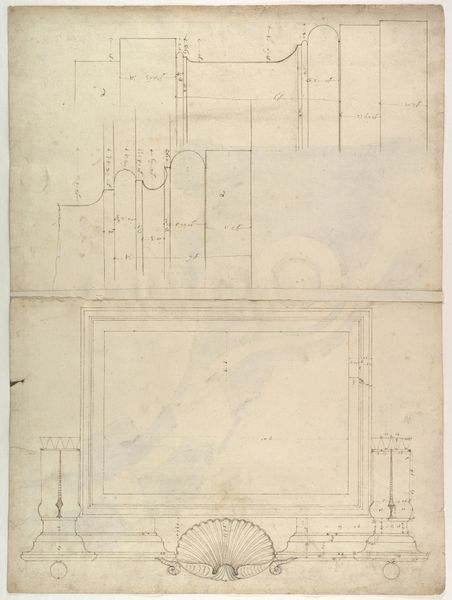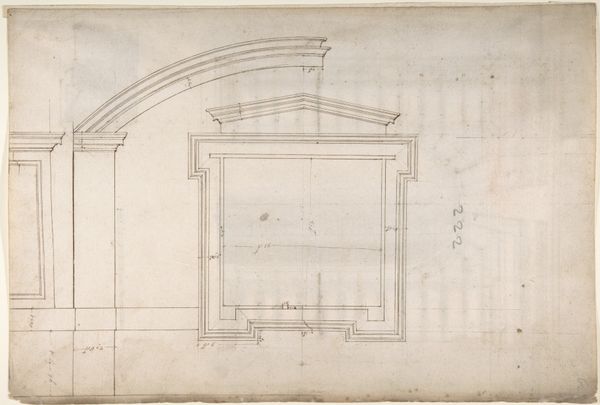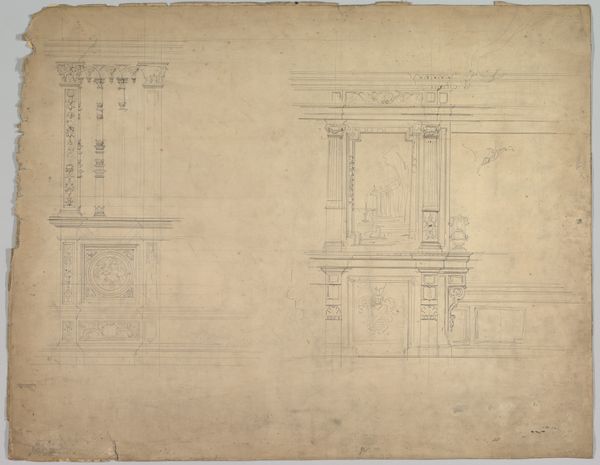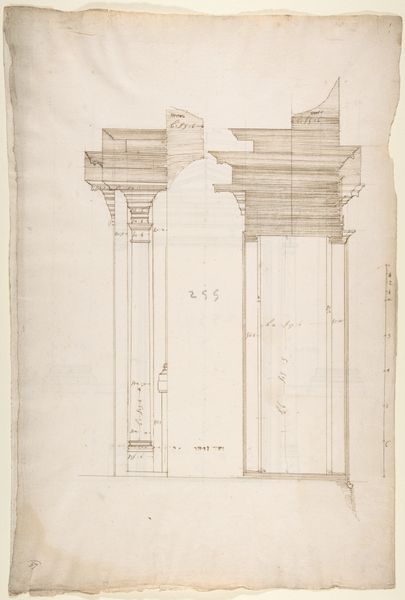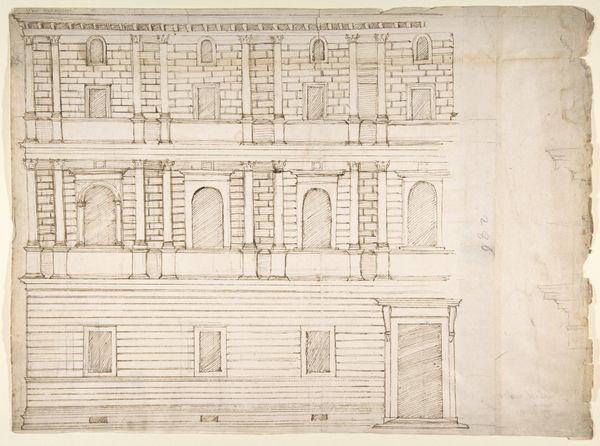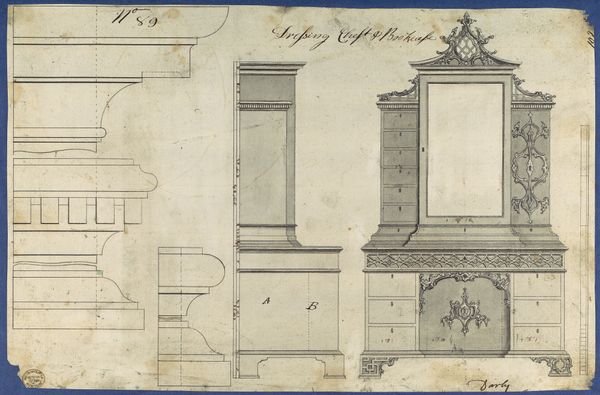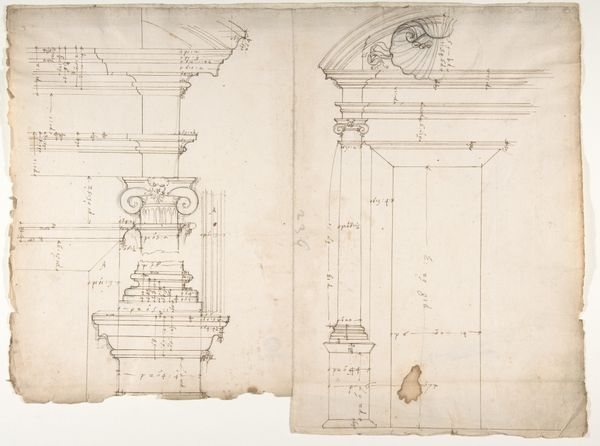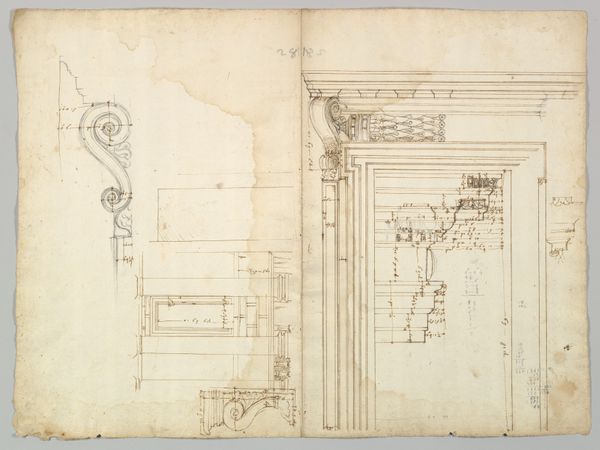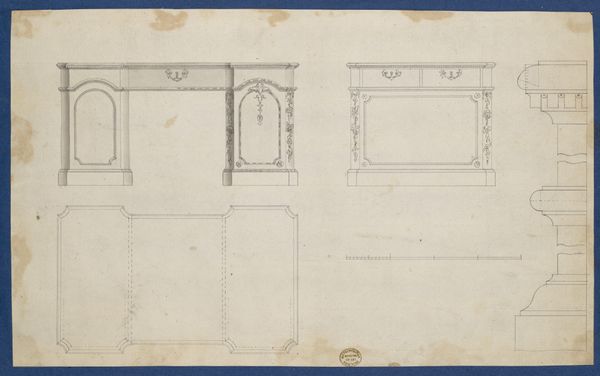
San Lorenzo, model, right half façade (left hand of folio); San Lorenzo, Library, Ricetto, consoles, elevation (right hand) (recto) blank (verso) 1500 - 1560
0:00
0:00
drawing, print, paper, pencil, architecture
#
drawing
# print
#
paper
#
11_renaissance
#
pencil
#
italian-renaissance
#
architecture
Dimensions: sheet: 22 13/16 x 17 5/16 in. (58 x 44 cm)
Copyright: Public Domain
Curator: Before us, we have an intriguing architectural study. It's a sheet featuring drawings of San Lorenzo in Florence, specifically a facade model and library details. It dates to the mid-16th century and is attributed to an anonymous artist. Editor: There’s an airy lightness to the lines that belies the massive scale it hints at. I feel the ghost of classical ideals hovering. What's the historical climate surrounding its production? Curator: This was Renaissance Florence, remember. A period of intense patronage and artistic innovation, of course, much of which served to legitimize the power of families like the Medici. It's critical to look at art’s socio-political use, here a fusion of classical style employed for concrete consolidation of wealth and power. Editor: Exactly. And what kind of paper are we seeing, and the method of its marking? Was it commonly used at the time or was this more high-end? I'm thinking about how the specific materials available influence what the artist could realistically produce. This sketch shows a confidence, like he was used to accessing what he needed. Curator: It appears to be laid paper, with pencil markings, likely reflecting the common drawing practices for architectural studies at the time. Its availability, or lack thereof, dictated its status. Editor: It also has a certain human element, a fallibility present within it which offers warmth. I imagine that is one consequence of the work done on paper and with pencils. Perhaps that brings a personal touch to even something as grand as architecture. The lines waver but its intention stands rigid and confident in spite of this, or because of it. How were drawings like this used? As plans, models, or something else? Curator: Likely a study drawing or a record. It’s less polished than presentation drawings, so maybe more utilitarian. And yes, this shows that "humanness", but who was considered human and valued then, given the gendered and classist labor involved, remains in question. Editor: Good point, there is so much wrapped up within this work beyond just architecture and aesthetics, which the viewer should remember. Thanks for shedding some light on this drawing, I feel it deserves more attention and investigation. Curator: Absolutely, thanks to you as well for discussing how materiality frames the image.
Comments
No comments
Be the first to comment and join the conversation on the ultimate creative platform.


